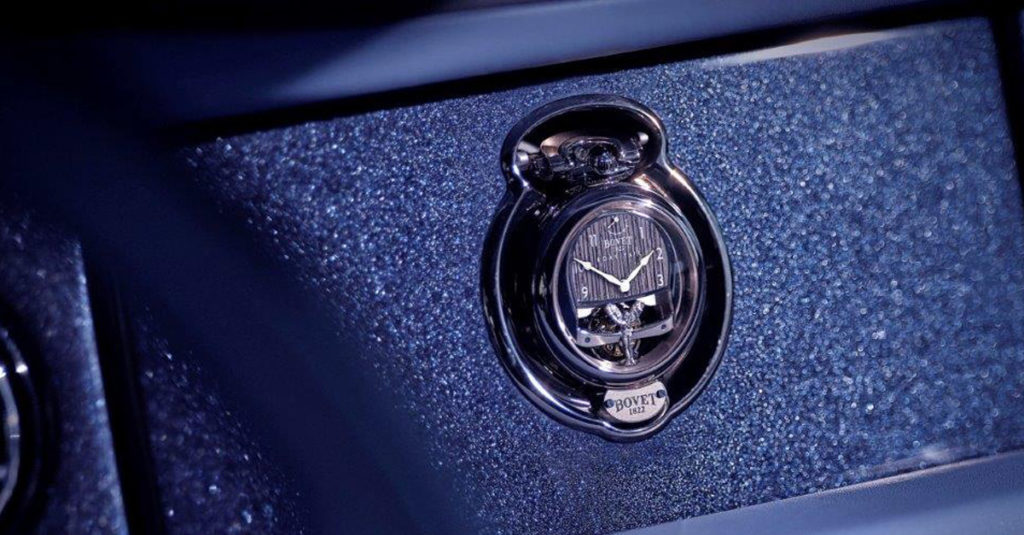
WEST SUSSEX – The clock in a Rolls-Royce motor car frequently assumes a jewel-like status, often becoming a canvas for the client to tell the story of their commission in miniature. For Rolls-Royce Boat Tail, the recently unveiled first of three coachbuilt creations, in which every element has been created to the owners’ exact specifications, this iconic centrepiece has been elevated to new technical and aesthetic heights.
In a spirit of warm collaboration, Rolls-Royce Motor Cars and Swiss master watchmakers, BOVET 1822, have created a pair of unique timepieces for Boat Tail and its owners. This ambitious undertaking brought together designers, engineers and craftspeople from both luxury Houses, in a magnificent demonstration of their shared values of excellence, precision, heritage, artistry, innovation and attention to detail.
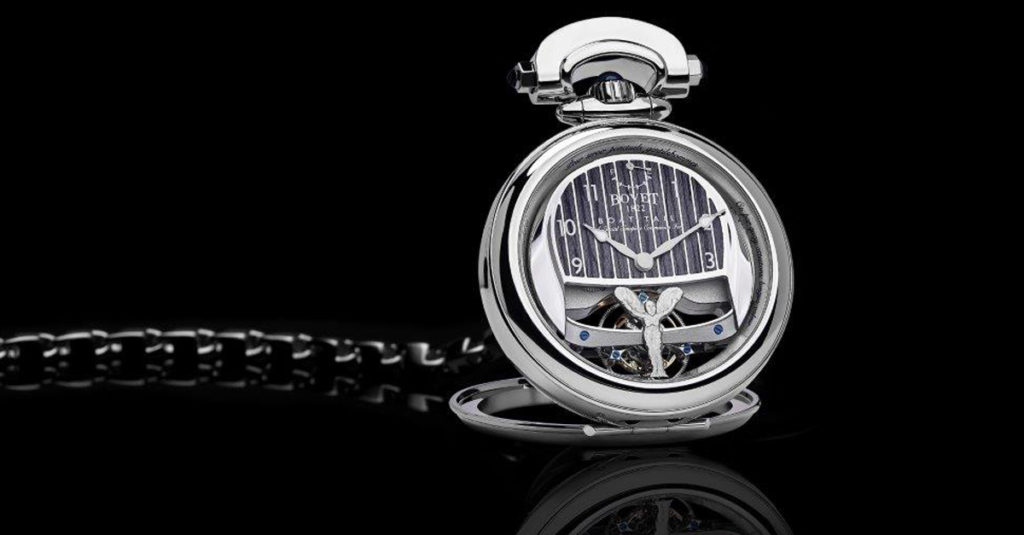
The timepieces are unique to both the horological and automotive worlds. Made as a pair – in lady’s and gentleman’s versions – they are reversible, and housed in BOVET 1822’s patented Amadeo case, which allows them to be worn on the wrist, or used as a table clock, pendant or pocket-watch, as well as being placed front and centre in Boat Tail’s fascia as the motor car’s own timepiece. Both are fitted with tourbillon mechanisms to ensure perfect accuracy.
“Rolls-Royce Boat Tail is a pure expression of its owners’ interests, influences and passions, with every detail minutely considered. We have enjoyed working with BOVET 1822 to create a pair of exquisite timepieces that also serve as Boat Tail’s dashboard clocks. In doing so we have together created historically significant items of detail, precision and beauty. These remarkable objets d’art, unique to the first iteration of Boat Tail, represent the finest examples of the skills and values shared by our two great luxury Houses.” said Torsten Müller-Ötvös, Chief Executive Officer, Rolls-Royce Motor Cars.
“I am so proud of the BOVET 1822 team, who worked in tandem with their counterparts at Rolls-Royce to produce something truly spectacular. The owners of the coachbuilt car and these bespoke timepieces are personal friends, as well as valued collectors of BOVET 1822. It was important to do the very best for them – two completely unique pieces that are unlike anything we have ever done before.” commented Pascal Raffy, Owner, BOVET 1822.
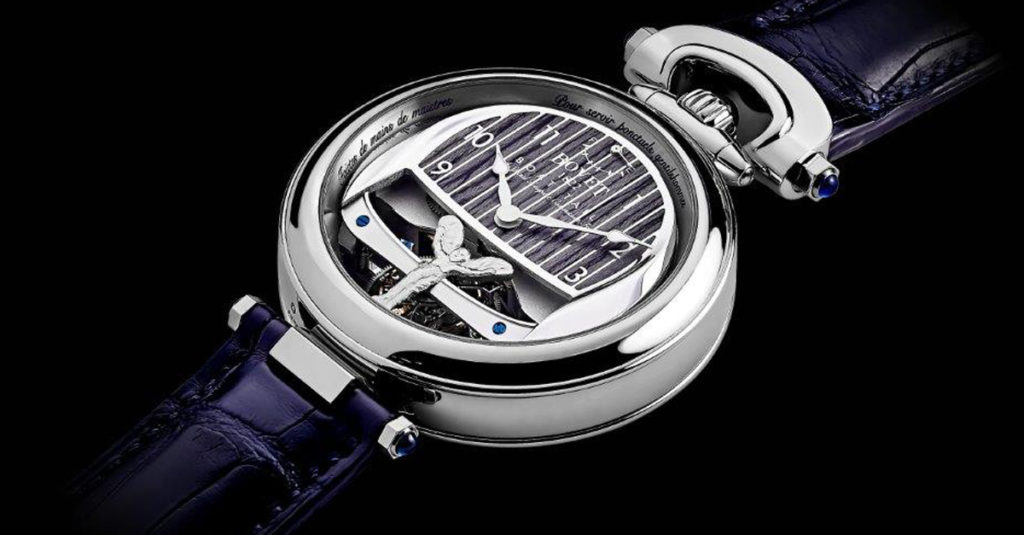
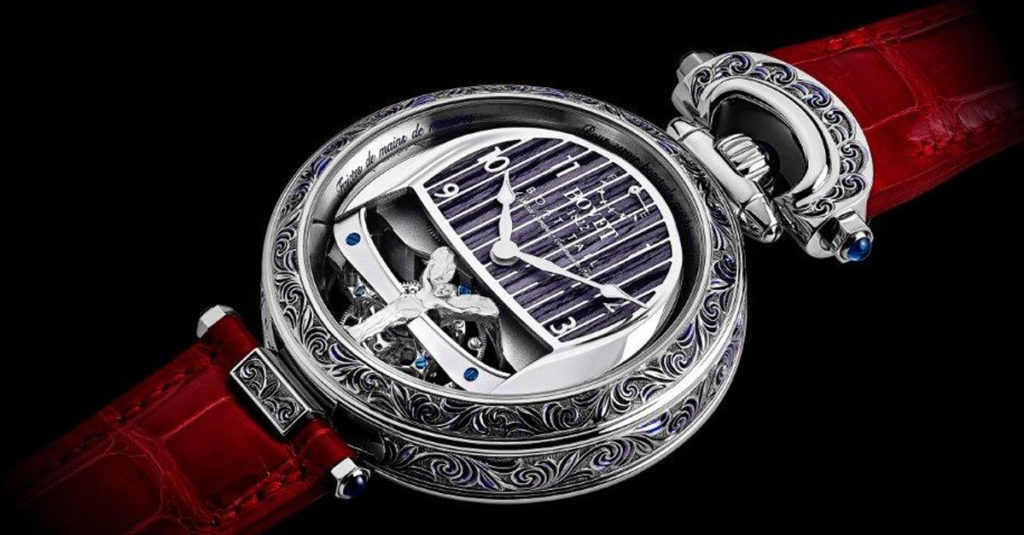
BOVET 1822 initially earned its reputation making luxury pocket-watches for wealthy patrons in China; today, it is renowned worldwide for its exquisite timepieces featuring hand-painted dials, detailed engraving and finely finished visible mechanisms.
The timepieces created for this first iteration of Boat Tail have specially designed 18K white gold cases and feature matching front dials with the same Caleidolegno veneer found on the aft deck of Boat Tail itself, and finished with the owner-couples’ names. The gentleman’s timepiece is highly polished; the lady’s is ornately engraved then filled with blue lacquer.
On the reverse side, the dials are more individual. The gentleman’s features an aventurine dial with the celestial arrangement of the night sky over the place of his birth on his birth date; the lady’s is decorated with an ornate miniature painting of a flower bouquet on a mother-of-pearl dial. This design is a traditional BOVET 1822 motif, chosen by and personalised for the owner. Both reverse dials have hand-engraved Bespoke sculptures of Boat Tail, complete with wheels, door handle, mirrors and other fine details. By working closely together, the teams at Rolls-Royce and BOVET 1822 were able to achieve a precise colour match between the lacquer on this tiny work of art and the full-size motor car.
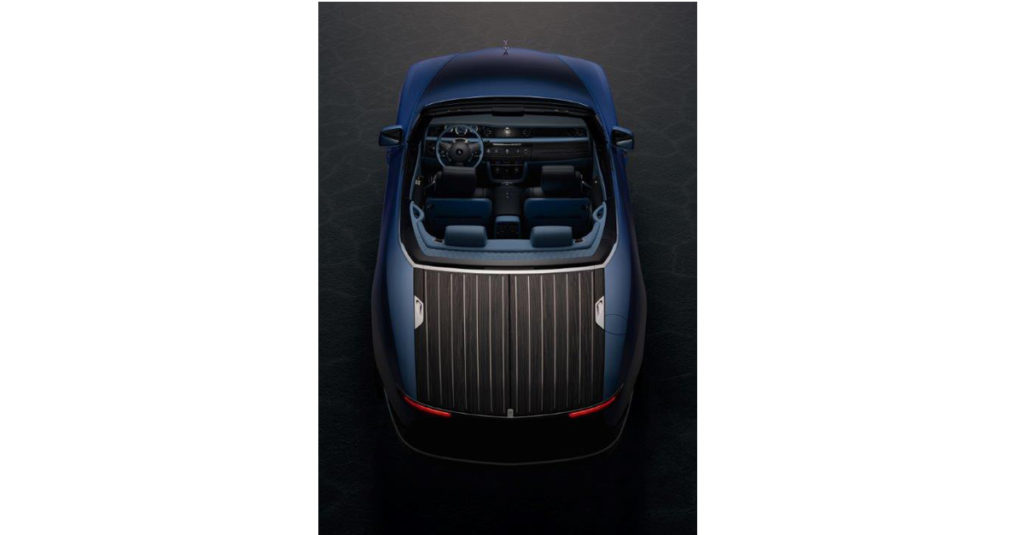
Further close cooperation was required to ensure the timepieces conformed to the demands of their unique role as motor car clocks. In watchmaking, weight is rarely an issue for a complex timepiece, but in this instance, there was a limit on the combined permissible weight of the timepieces and their holders. BOVET 1822 met this requirement by creating an entirely new 44mm white gold case. In addition, the timepieces and holders also had to be tested to automotive-industry standards for vibration and crash safety – something never previously undertaken on mechanisms of this kind. At a conservative estimate, the timepieces’ design, engineering, sculptures, miniature painting, marquetry, bespoke movements and cases took a total of 3,000 hours to complete.

0 Comments